AppleInsider · Kasper's Automated Slave
About
- Username
- AppleInsider
- Joined
- Visits
- 52
- Last Active
- Roles
- administrator
- Points
- 10,950
- Badges
- 1
- Posts
- 66,634
Reactions
-
White House says Trump doesn't want to harm Apple and iPhone prices won't rise
Trump advisor Kevin Hassett has played down the "tiny little tariff" on firms such as Apple and strangely insists consumers won't pay more for iPhones.
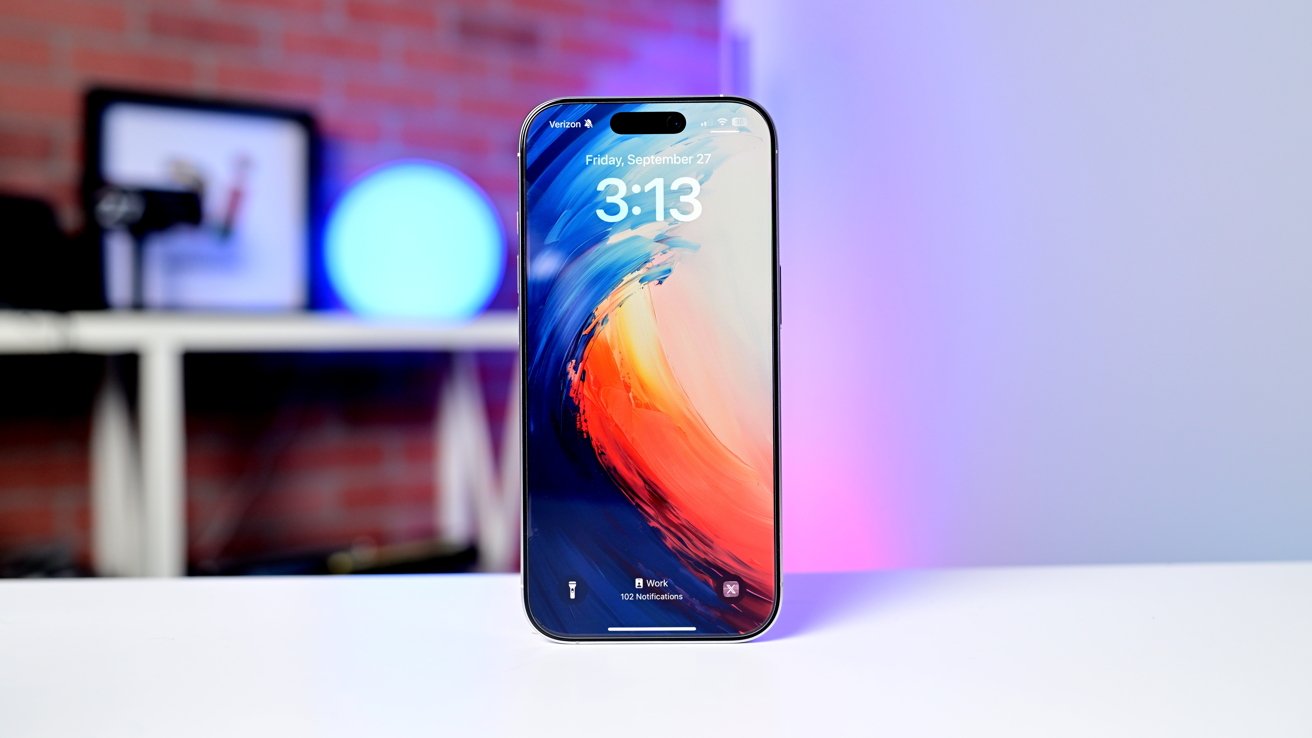
The White House's Kevin Hassett insists buyers will not have to pay more for iPhones because of tariffs
In announcing a 25% tariff on all imported iPhones, Trump took the unusual step of admitting it would be Apple that pays, rather than his usual false claim that foreign countries will. Now in repeating this, National Economic Council Director Kevin Hassett has treated tariff complaints as a joke -- and also insisted that Apple will not raise prices.
"I'm kind of like the person in an airplane that's getting walloped over the head by everybody," he said in an interview with CNBC, "where everybody says, 'Oh, like, we're never going to be able to do anything if we have this tariff, it's going to be a disaster if we have this tariff.'"
In a confusing interview, he said both that CEOs come in to complain like this, but then "tell me the opposite because they don't want [their] bonds to be downgraded."
"So the point is that everybody is trying to make it seem like it's a catastrophe if there's a tiny little tariff on them right now," he continued, "to try to negotiate down the tariffs."
Hassett did admit that it was "impossible to move things overnight," and so that Apple could not immediately reshore iPhone production. But he would not confirm whether the Trump administration would grant a reprieve if Apple were to announce a years-long plan to move manufacturing to the US.
"We'll see what happens," he replied, "we'll see what the end game is, but we don't want to harm Apple."
Apple has already said that it expected to spend $900 million solely on tariffs in its June quarter. But that was before the latest 25% tariff, which investment firms like Morgan Stanley believe mean Apple will have to raise prices.
Trump has ordered Walmart to not pass on the costs of his tariffs to consumers, and even Home Depot which voluntarily said it would do this, has admitted it may stop stocking heavily-tariffed items.
Apple has seemingly not received such an order, but Hassett, as director of the National Economic Council and with a PhD in economics, doesn't see a problem. Apple simply will not pass on tariff prices to consumers, he said.
"And in the end, if you think that Apple has a factory someplace that's got like a set number of iPhones that it produces, and it needs to sell them no matter what," he continued, "then Apple will bear those tariffs, not consumers, because it's an elastic supply."
Supply elasticity refers to how quickly a company can respond to price changes. Specifically, it regards how Apple could theoretically produce more or fewer iPhones depending on changes in demand.
Apple can and annually does revise its manufacturing orders, shifting production to match demand. However, this has no connection with whether Apple will bear the 25% cost imposed by Trump, reportedly as punishment for Tim Cook not attending an event.
It also has no bearing on the tariffs that the White House has prejudged will come after the current national security investigation into semiconductors.
Read on AppleInsider
-
Apple Filing Protocol will soon disappear completely from macOS
Apple Filing Protocol is one of Apple's original file-sharing technologies. Its client software will soon be gone from macOS forever.
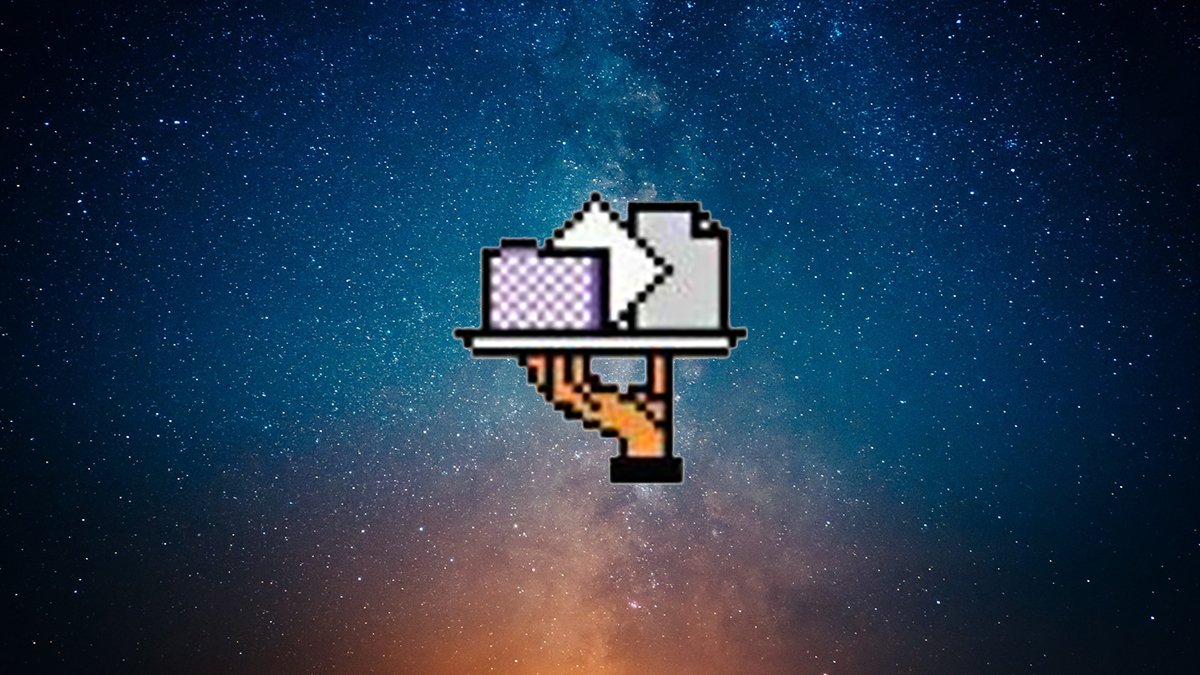
Apple has deprecated support for Apple Filing Protocol in macOS Sequoia 15.5.
The year after Apple released the Macintosh in 1984, it introduced a proprietary networking standard called Apple Filing Protocol. Part of a suite of software which included AppleTalk, AppleShare, and Apple cabling hardware called LocalTalk, AFP allowed users to share files across Macs on local area networks.
This was a decade before the Internet and its open protocols became popular in the mid-1990s.
Apple developed AFP in part because the original Mac OS and most Mac software used another proprietary technology called resource forks. Most early Mac software files contained two forks: a data fork and a resource fork containing user interface and other elements.
The problem was that if you copied early Mac software uncompressed across non-Mac computers, the destination computer would strip the resource forks off files, damaging them.
Apple later developed an additional collaboration and sharing environment called Apple Open Collaboration Environment (AOCE) and PowerTalk, both of which were failures. AOCE was introduced in Mac OS 7.1.1 but didn't gain any real traction until Mac OS 8.5 when it was upgraded.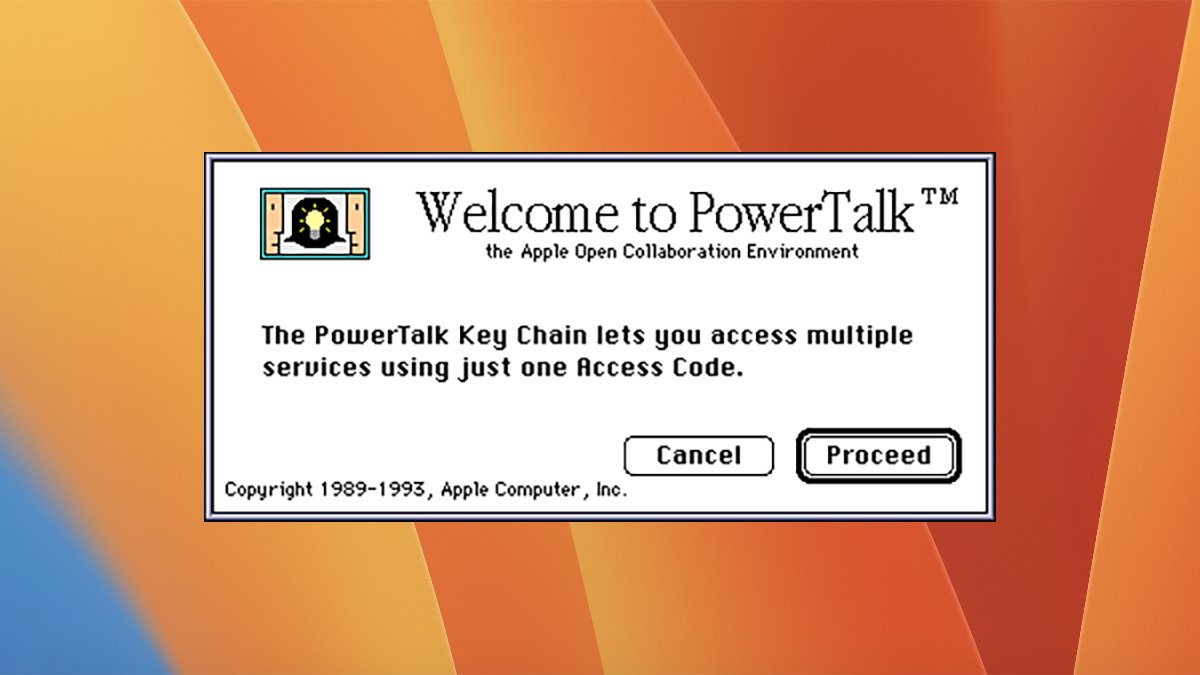
The macOS Keychain was originally part of Apple's PowerTalk software.
When the internet was commercialized in the mid-1990s, Apple abandoned AOCE in favor of internet standards such as TCP/IP. Apple also sold a separate server product in a box called AppleShare Server, which Matt Fuller has some spectacular photos of on his site.
A late version of AppleShare packaged as a standalone product was released called AppleShare IP, which allowed AFP to run over TCP/IP networks.
AppleShare volumes and disk volumes shared from users' Macs were accessed through an original Mac software component called Chooser. Later versions of the Chooser allowed direct IP connection to servers by clicking a button and specifying an IP address.
The now-defunct Mac OS X Server product also included AFP, SMB/CIFS, and NFS File Services as part of its file-sharing features. Apple even sold a preconfigured PowerPC-based G4 "server" Mac, which had AppleShare IP preloaded.
The original Mac OS Chooser with the AppleShare icon selected.AFP in Mac OS X and macOS
Apple released Mac OS X in the year 2000. Mac OS X included support for AFP and AppleShare until OS X 10.9 (Mavericks) when Apple switched the default file sharing protocol in macOS to Microsoft's Server Message Block (SMB).
Apple removed the ability to run an AFP server in macOS 11 (Big Sur). However, users can still use the AFP client in the Finder in macOS via the Go->Connect to Server menu item and the afp:// protocol to connect.
When you connect to an AFP volume in the macOS Finder, the connected shared volume(s) mount on your Desktop just like local disk volumes.
Early 2000s Macs included a Mac OS 9 emulator called Classic, which also enabled users to continue using OS 9 and connecting to and from OS X Macs using AFP: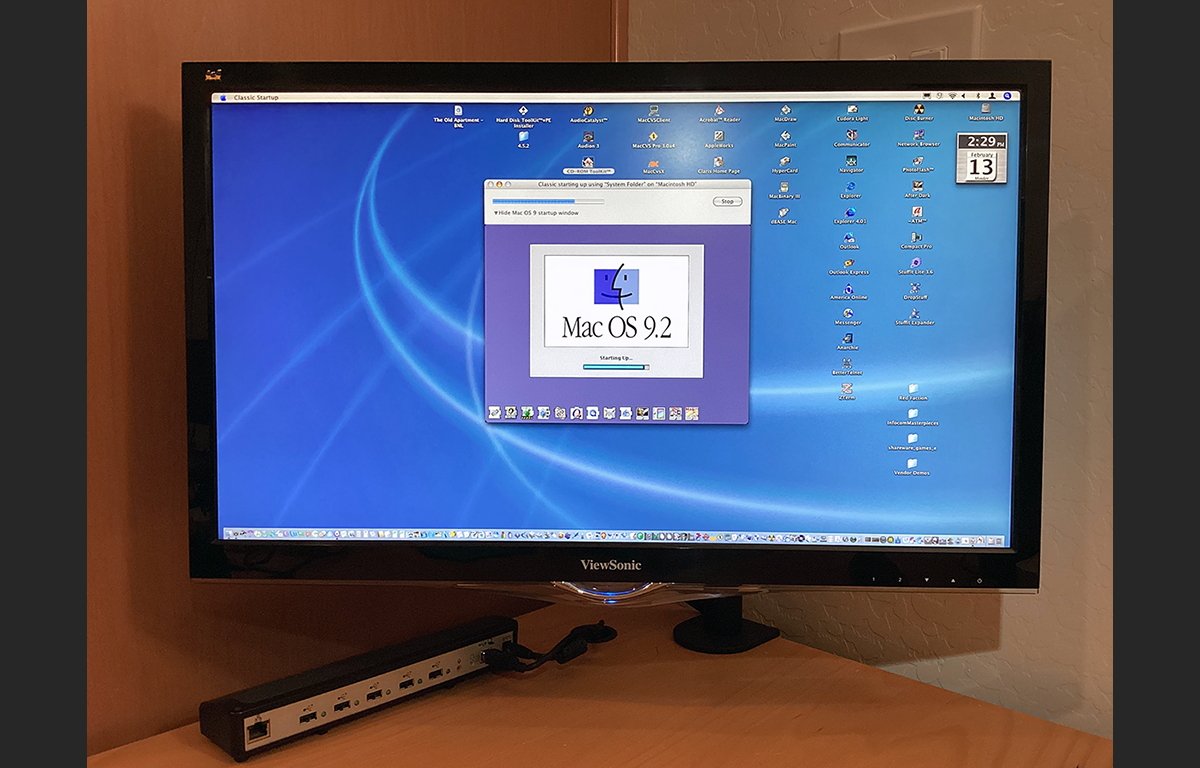
Apple deprecates support for AFP in macOS Sequoia 15.5
macOS Sequoia 15.5 has deprecated AFP, effectively preparing to end support for AFP clients at some point in the future. Apple has signaled in the enterprise release notes for macOS Sequoia 15.1 that it will be "removed in a future version of macOS," without stating exactly when that will occur.
As such, you should transition all your file-sharing and networking workflows to SMB. For older UNIX-only servers that still support NFS, that protocol can still be used as well.
There's an NFS app for macOS called NFS Manager from Germany's Marcel Bresink.
On pre-15.5 Macs, see the Terminal AFP commandmount_afpby opening Terminal and typing:man mount_afpand pressing Return on your keyboard. To exit the man system, press Control-Z or the q key.
Several third-party NAS vendors, such as Synology and others, include AFP support in their products, but that's likely to come to an end soon too. You'll probably have to use SMB to connect to these.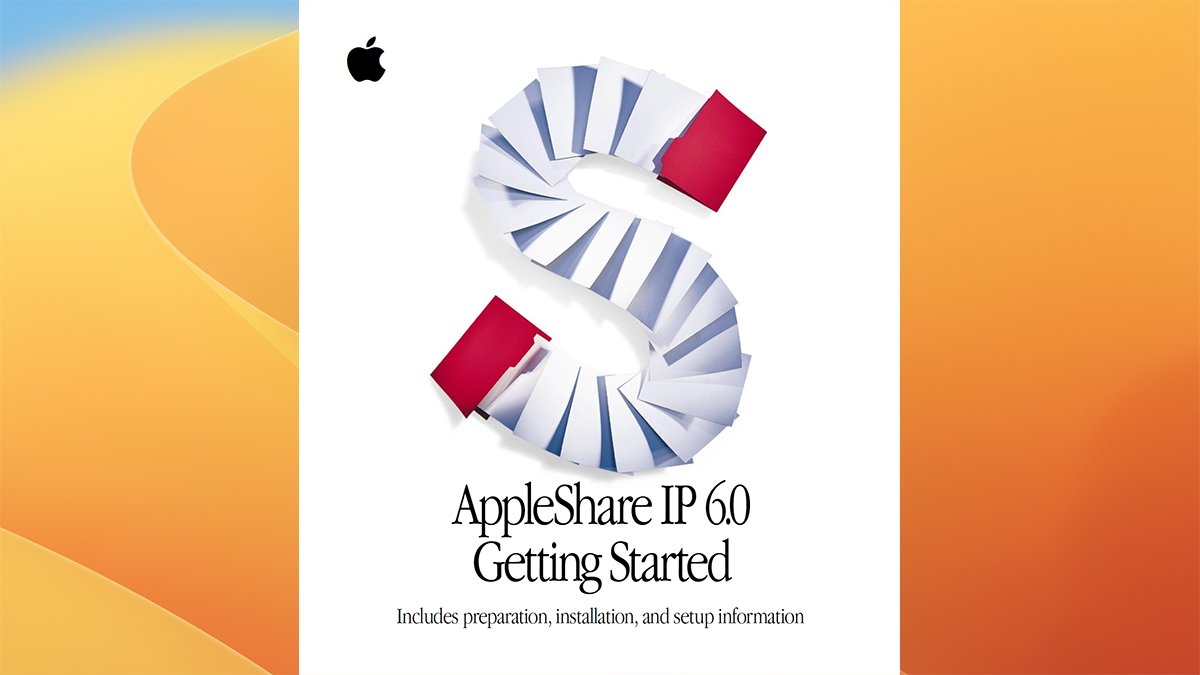
AppleShare IP 6 retail user guide.Third-party solutions
For those users who absolutely need to hang on to AFP, an open third-party product called Netatalk is available and is still being maintained as of 2025. How long Netatalk will be able to support AFP remains to be seen however, since it too is based on the protocol itself.
Since Apple removed native core AFP support from macOS, even third-party AFP products may no longer work.
If you're still running an older Mac OS 7, 8, or 9.x-based machine, check out AppleTalk over IP.
For developer information on AFP, see the now somewhat dated Apple Filing Protocol Programming Guide. There's also a technote TN3151: Choosing the right networking API.
AFP has served Apple well. It was simple and easy to use - and it was reliable. But since we live in a TCP/IP and Windows-based world now, it has outlived its usefulness.
It's well past time to retire it.
Read on AppleInsider
-
Epic vs. Apple: What Apple is being forced to do to the App Store
Following the ruling that Apple has willfully violated the anti-steering aspect of the Epic vs Apple trial, the company must make specific changes to the App Store. Here's what it must immediately do, and what this all means for Apple, developers, and users.
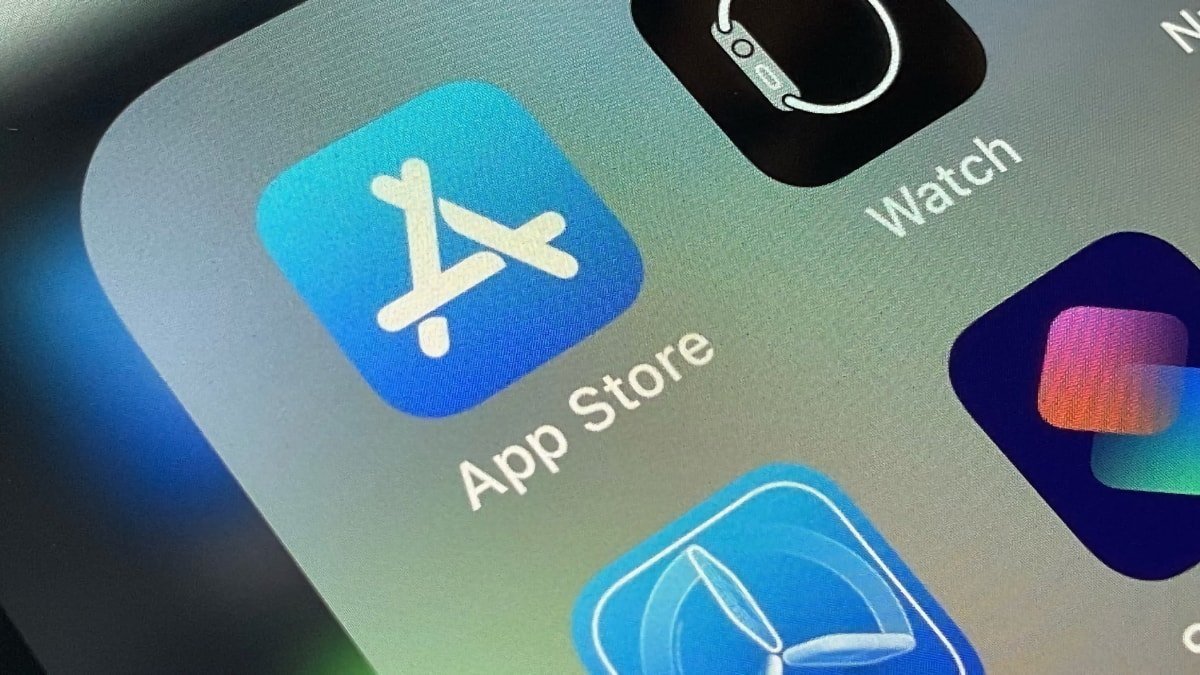
App Store icon on an iPhone
Apple won the trial against Epic Games, which was started by the games company intentionally violating its App Store agreements. But Apple did lose on one count regarding how developers can and can't direct users away from the App Store.
Epic Games pressed on this point and has now won a victory with Judge Yvonne Gonzalez Rogers agreeing that Apple violated an anti-steering injunction. Describing Apple's subsequent actions as "gross insubordination," Judge Rogers not only repeated the anti-steering injunction, but specified steps in particular detail to prevent Apple being able to do anything but comply.
Apple also must comply immediately, regardless of whether it appeals. The court "will not entertain a request for a stay given the repeated delays and severity of the conduct."
While Judge Rogers grouped her requirements into six general categories, the specific individual instructions Apple must abide by are:- Cease charging any fee on purchases made outside of an app
- Cease demanding developers report purchases
- Cease restricting how developers promote within their apps any alternative purchase options
- Allow developers to use any links, buttons, or other calls to action, as they want
- Cease refusing to allow apps in its video and news partner programs to offer links to alternative purchases
- Use only the court-approved notification when users follow a link to a third-party site
- Cease forcing developers to link only to one specified page on their site
- Allow developers to instead send users directly to pages regarding the purchase they want
Judge Rogers maintains that Apple had successfully made as few developers as possible benefit from the court's original anti-steering ruling. "As of the May 2024 hearing," she wrote, "only 34 developers out of the approximately 136,000 total developers on the App Store applied for the program, and seventeen of those developers had not offered in-app purchases in the first place."
Specifically to prevent Apple interpreting the new orders in any way that would repeat this situation, Judge Rogers laid out her precise requirements. Each limits Apple in particular ways -- and each has consequences.Cease charging any fee on purchases made outside of an app
In response to allowing developers to offer purchases that would not mean Apple getting up to a 30% commission, Apple offered a new option that was allegedly meant to discourage developers. They could offer external purchases, but any bought through the app would mean them having to pay Apple a 27% cut.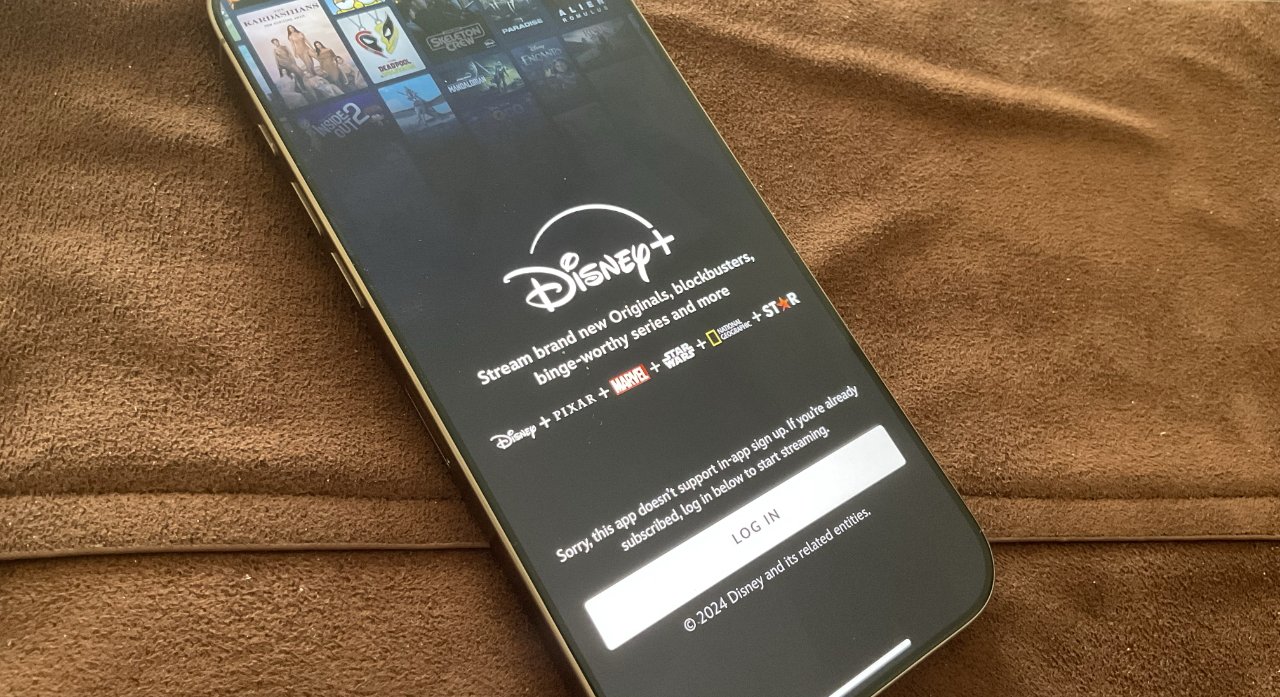
Disney is in Apple's Video Partner Program, which excluded it from offering external purchase links
Further, just as with certain affiliate programs, Apple did not solely require a cut of any purchase made through "immediate use of the link." Apple also mandated that it get 27% of all purchases made within seven days of the user tapping or clicking that external link.Cease demanding developers report purchases
As part of ensuring that it got paid for external purchases, Apple required developers to report their earnings. It required firms to allow Apple to conduct audits of its revenue, and monitor that developers were correctly paying what was owed.
In wiping out the option to charge any fee for an external purchase, Judge Rogers ruled that therefore "no reason exists to audit, monitor, track or require developers to report purchases or any other activity that consumers make outside an app."Cease restricting how developers promote within their apps any alternative purchase options
Apple did very specifically adhere to the ruling that meant it had to allow developers to link out to alternative offers. But it mandated that developers could only show one link at one point in their app.
More, that one point could not be on a screen listing in-app purchases, nor at any point on the way to that screen. The link also couldn't stay on screen in any way after a user has gone by it.
Plus, the link could not be placed in a pop-up, and it had to be on section of the app that the user positively chooses to go to. It couldn't, for instance, appear on a splash screen as the app launches.Allow developers to use any links, buttons, or other calls to action, as they want
When allowing developers to link out to alternative sites or offers, Apple dictated -- and so limited -- the precise wording used. Five basic templates were allowed, which on the one hand denied developers the facility to use persuasive calls to action, instead of neutral ones.
But it also meant that developers could solely link out for one of the purposes specified in the templates. Apple was using its rules to constrain a developer's operation.
"If a developer wanted to compete on price not by offering lower prices but by offering other products or benefits on the web, there is no way to communicate that to a user in-app," wrote Judge Rogers.Cease refusing to allow apps in its video and news partner programs to offer links to alternative purchases
This refers to how Apple chose to exclude any developer in either its Video Partner Program, or its News Partner Program. As examples, Judge Rogers listed Disney+ and the New York Times.
Those developers pay a 15% in-app purchase fee to Apple, but if they elected to add links to external options, that fee changes to 30% for every in-app purchase.
"Said differently," wrote Judge Rogers, "and simply, including an external purchase link in their app doubles their commission rate."Use only the court-approved notification when users follow a link to a third-party site
Apple does remain allowed to notify users that they are leaving the App Store and a particular app, so that it is clear they are going to a third-party site or service. That's probably done with a mind to potential legal difficulties if a user visits a bad actor's site and argues they believed they were still in Apple's curated App Store.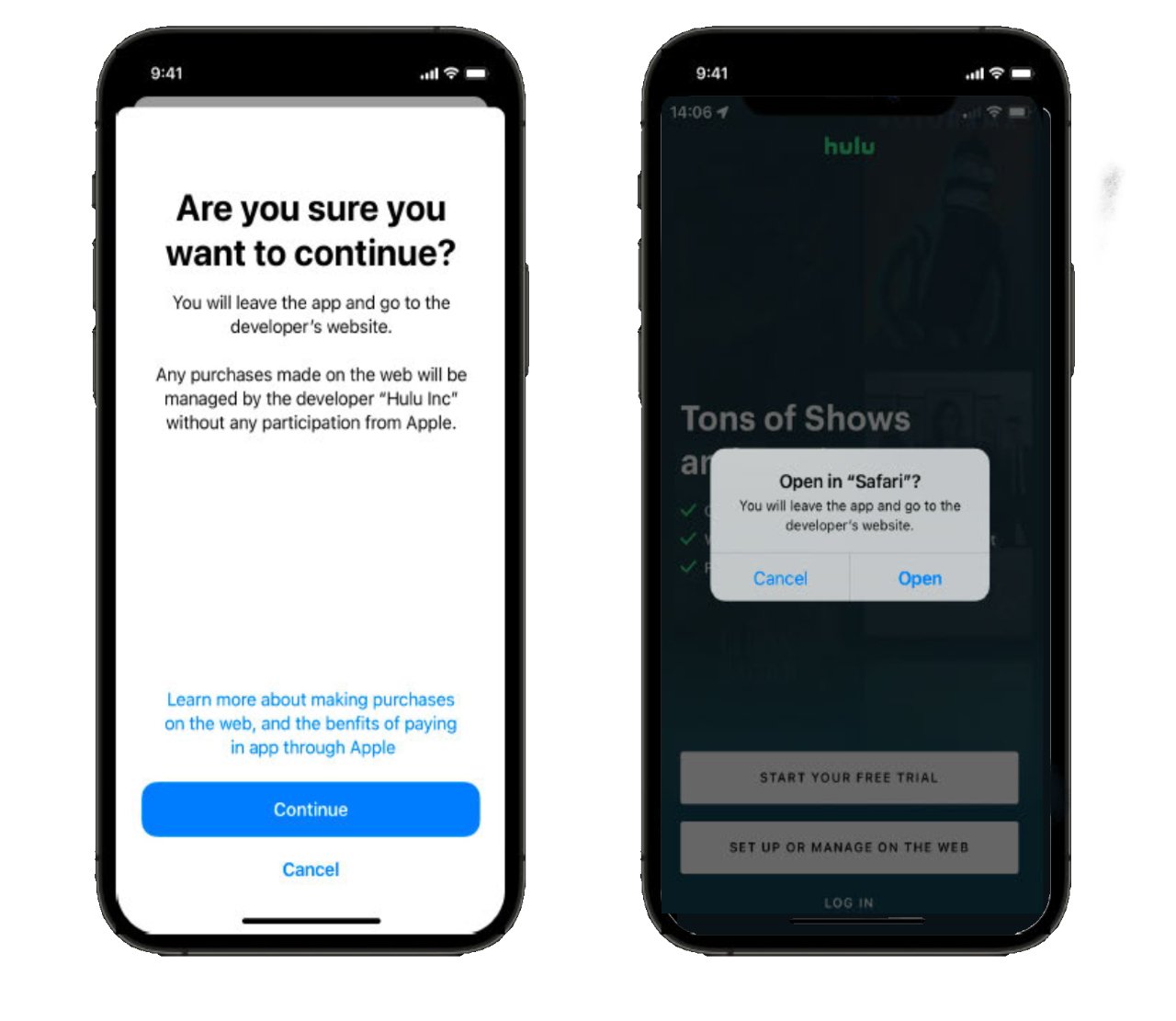
Left: an example of how Apple wanted to warn users before leaving an app. Right: the new court-mandated wording -- image credit: US District Court
However, Judge Rogers referred to Apple's current notification as the use of a "scare screen," designed to put users off.
Judge Rogers not only mandated that such scare screens cannot be used, she specified that only a "neutral message" can be shown instead.Cease forcing developers to link only to one specified page on their site
Apple limited how links could be shown in apps, but then also limited where those links could take users. They were required to go to one static page, such as a developer's homepage.
So if a developer had two or more different offerings, they were not allowed to link directly and separately to each of them. Instead, they would have to create a page that listed everything, and require the user to take another step through to what they want to buy.Allow developers to instead send users directly to pages regarding the purchase they want
Developers could not send any information along to its site when a user elected to follow a link there. There's a privacy argument about passing user details to third-parties, but in this case the information would typically concern which offer the user wanted.
So they could, for instance, choose a tier within the app and then be taken to the correct product page to buy that tier.What happens next
Apple has responded, saying that "we strongly disagree" with the injunction, and that it will appeal.
It's conceivable that the appeal could reverse the latest decision, although it's unlikely. But regardless of the outcome of that appeal, Apple will have to implement all of these changes immediately -- and that will not be the end of the case.
For alongside ordering the new and very tightly-specified steps Apple has to take, Judge Rogers has referred the case for potential criminal proceedings against the company over alleged lies during the trial.
Read on AppleInsider
-
Easter Sunday surprise: Closed Apple Store's doors were unlocked
Easter Sunday pedestrians managed to have a peaceful experience browsing a Dutch Apple Store, as the front door was left unlocked when the store was meant to be closed.

The Apple Store in Amsterdam - Image Credit: Apple
A group of weekend shoppers in Amsterdam were surprised on a visit to the Apple Store in Leidseplein on Sunday with an extremely tranquil shopping experience. Entering the store to acquire an Apple Watch, the group discovered they were the only ones there, with no staff present at all.
It turned out that the store was actually closed. Along with no employees, the store also had other signs that it wasn't in use that day, such as powered-down products and marketing screens turned off.
With signs that the store was mistakenly accessible, some of the twenty people who entered the store called the police, reports Algemeen Dagblad. People in the group ushered the rest out of the store and wait for the police to arrive, while also watching out to prevent looting.@arvinmulder Apple Store Amsterdam is geopend zonder personeel #amsterdam #applestore #applestoreamsterdam #apple #closed #firstvideo #viralvideos #tik_tok #easter #netflix #ihostage origineel geluid - Arvin Mulder
They did leave, but not before sharing the unusual situation on TikTok. A video from Arvin Mulder who was in attendance has reached over 510 thousand views, shows the state of the store at the time.
Eventually, a security guard who was in the canteen arrived and discovered the group. It turned out that they had forgotten to lock the door to the store.
Police later arrived to confirm nothing had been stolen or broken, and that access was an accident.Coincidental timing
The timing of the incident is apt, due to the store featuring prominently in the media, thank to Netflix. The streamer recently released a crime drama, "iHostage," which retells the hostage situation that took place at the same Apple Store.
During that incident, an armed man entered the Apple Store and took a hostage at gunpoint, demanding $230 million in cryptocurrency. After a tense standoff, the perpetrator was run over by a police vehicle and later died in the hospital.
Read on AppleInsider
-
Trade war escalations between Trump and China to significantly impact Apple
Apple could be severely affected as Trump reportedly pressures countries to limit their business dealings with China, which will result in more retaliations against US companies.
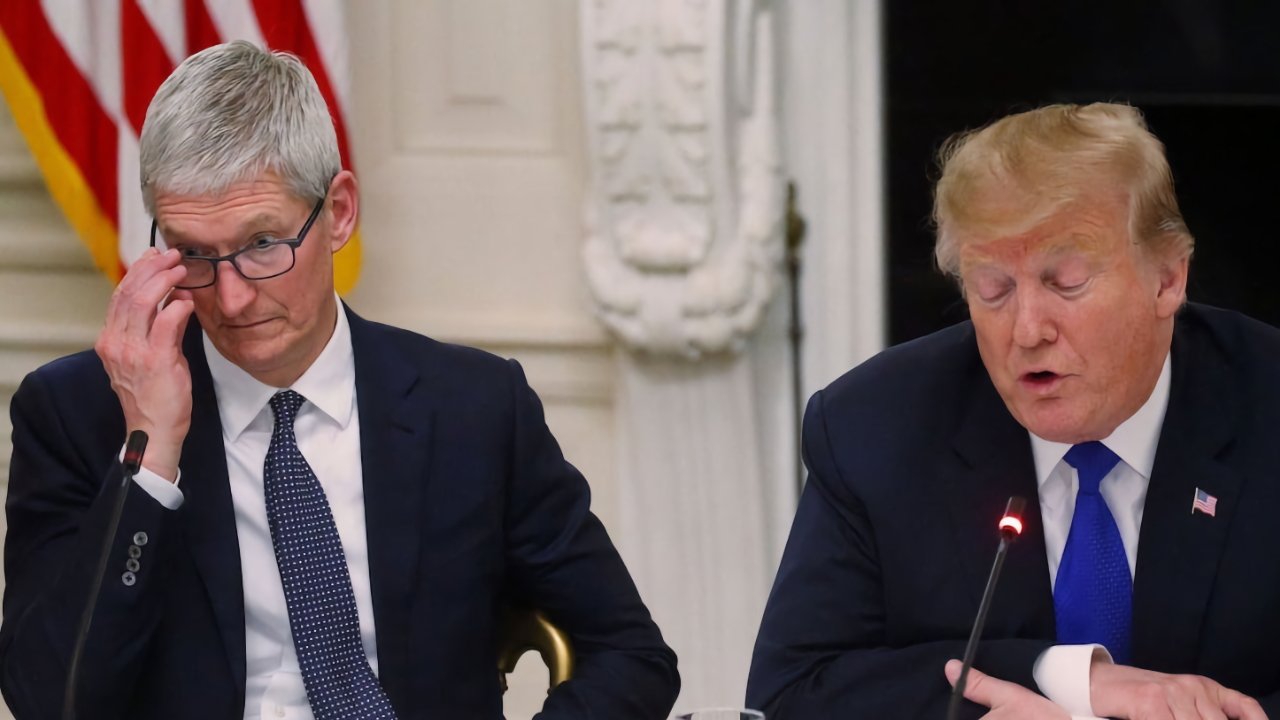
Tim Cook and Donal Trump in 2019 -- image credit: White House
China previously called Trump's trade war a joke and said it would not retaliate further than matching what was then said to be a 125% tariff imposed by the US. That tariff was then revealed to actually be 145%, and China did not escalate its own tariffs -- although it did halt rare earth mineral exports.
Now, however, CNBC reports that China has responded to what appears to be Trump's next move. While not announced by Trump or any other country involved, it is believed that isolating China is a key part of the White House's tariff negotiations worldwide.
"China firmly opposes any party reaching a deal at the expense of China's interests," a spokesperson for the Chinese Ministry of Commerce said, in translation. "If this happens, China will not accept it and will resolutely take reciprocal countermeasures."
In a press release from the Chinese Ministry of Commerce, the spokesperson went further and, again in translation, accused the US of having "coerced all parties to start so-called 'reciprocal tariff' negotiations."
"China believes that all parties should stand on the side of fairness and justice on the issue of 'reciprocal tariffs'," continued the spokesperson, "stand on the side of historical correctness, and defend international economic and trade rules and multilateral trading system."
In recent days, Trump has claimed to be in discussions with China and according to C-SPAN, says he expects an agreement to be reached "over the next three or four weeks."
According to Politico, no such discussions have taken place, even though China might allow its new international trade representative to negotiate. It's reportedly because Trump insists on dealing only with China's President Xi Jinping.What this means for Apple
Analyst Ming-Chi Kuo, the risks for Apple are severe. Countries could impose their own tariffs on components sent to them from China, for example.This CNBC report may suggest that tariff risks for Apple could escalate significantly, making the entire situation highly unpredictable.
1. The Chinese Ministry of Commerce's official statement, as reported by CNBC, indicates that the U.S. government's plan to use tariff-- (Ming-Chi Kuo) (@mingchikuo)
Kuo's tweet continues by noting that "if only the US imposes high tariffs on Chinese imports, the risks [for Apple] are manageable."
"However, if other countries also raise tariffs on Chinese goods," he says, "Apple would need to establish more non-China iPhone production lines to meet demand in markets beyond the U.S., meaning the tariff risks for Apple would become immeasurable and entirely uncontrollable."What happens next
Currently Apple is benefiting from an exemption to the China tariffs, although Trump repeatedly denies that there are any exemptions. At the same time, Trump also paused all tariffs -- except for those on China.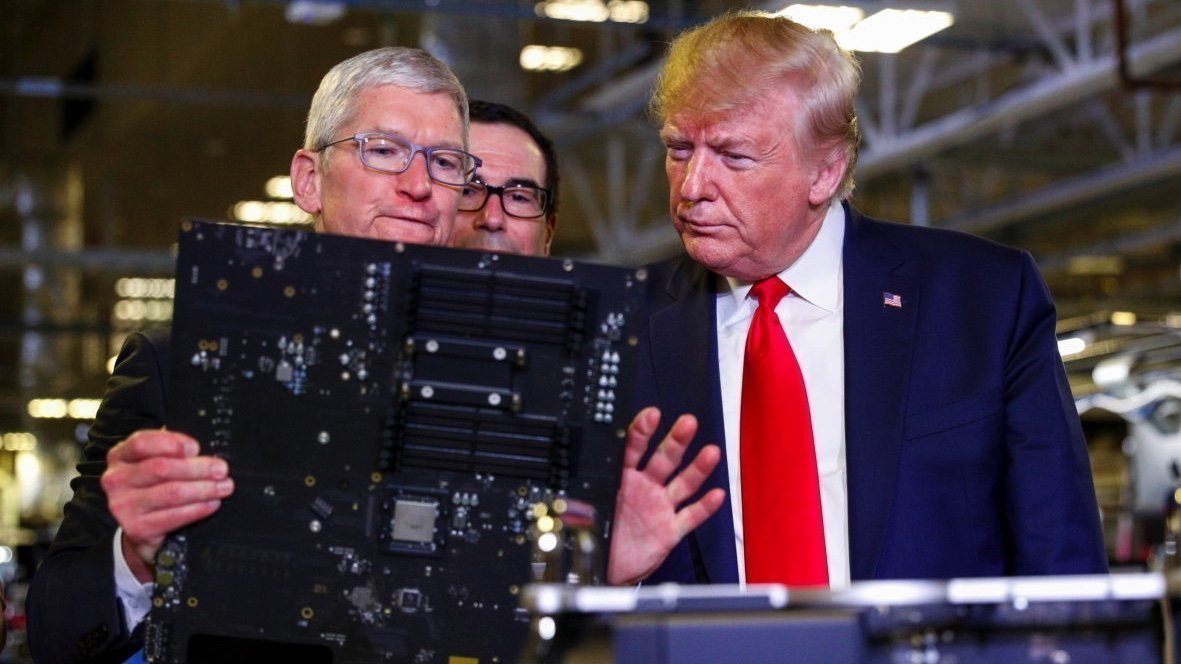
Tim Cook was able to get Apple a tariff exemption because he's kept up a working relationship with Trump (right)
Apple is likely to face further tariffs after the conclusion of a spurious investigation into any national security concerns with semiconductor production. Trump says Apple has not been given what he calls "exception," but rather it belongs in a different "bucket' of tariffs.
That bucket is one concerning semiconductors, but White House documentation backdates the investigation to before Trump's "reciprocal" tariffs were announced. It's not clear why Apple or other firms were then put into the presumably general "bucket" of tariffs.
It is clear, though, that the investigation will be followed by tariffs. While the documentation invites submissions by interested parties and purports that it will only impose tariffs if there are national security concerns, it is now certain to impose them.
That's because commerce secretary Howard Lutnick has already said on April 15 that semiconductor tariffs are "coming in probably a month or two." Trump, at the same time, said they would be imposed "next week."
Despite Tim Cook having reportedly persuaded Trump to exempt Apple from the tariffs, it has also been confirmed that the relief is only temporary. Apple was granted its exemption late on Friday, April 9, and shares rose from $198.15 to $211.44 when trading opened the following Monday.
That's still far below the $225.19 they were trading at before the "reciprocal" tariffs were announced. And at time of writing, they are down yet again, to $190.90.
Read on AppleInsider

